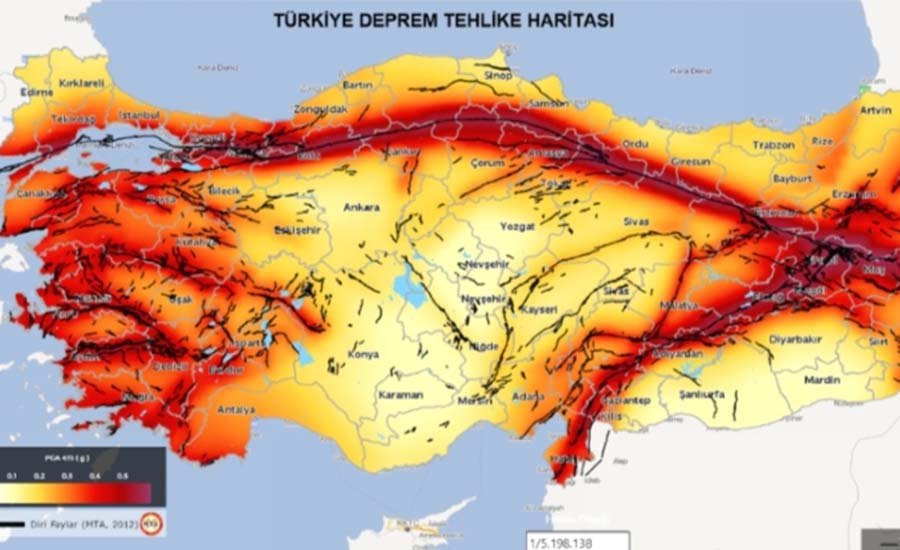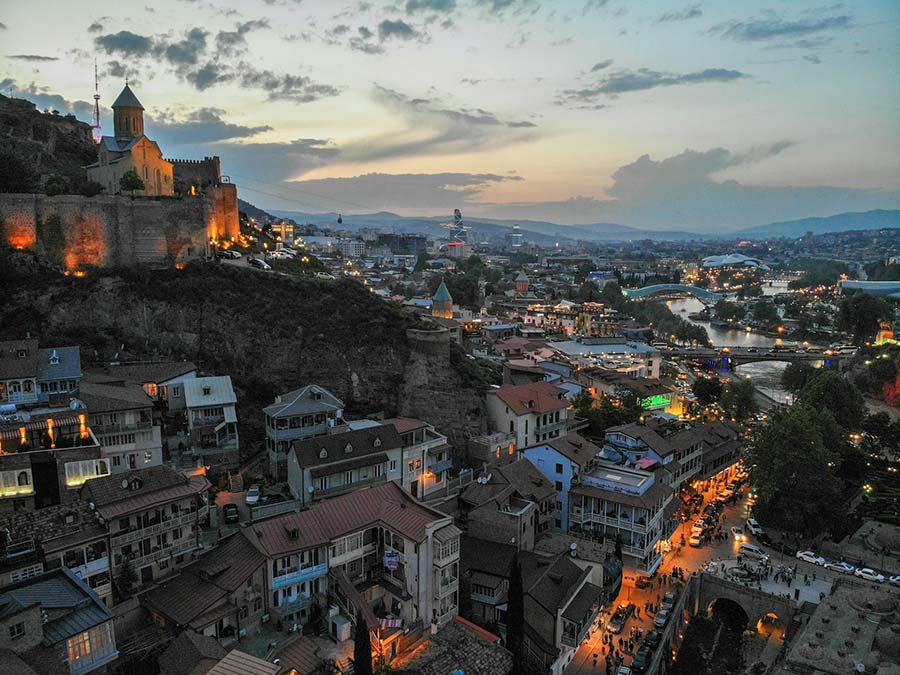читайте также
 Hotels in Vietnam: weak service and climate risks
Hotels in Vietnam: weak service and climate risks
 New housing rental rules in Greece
New housing rental rules in Greece
 Turkey at the Epicenter of Seismic Risk: 100 Earthquakes a Day
Turkey at the Epicenter of Seismic Risk: 100 Earthquakes a Day
 Global Wealth Map: The U.S. Maintains Leadership, Asia Strengthens Its Position
Global Wealth Map: The U.S. Maintains Leadership, Asia Strengthens Its Position
 Money Transfers to Georgia Increase: USA, Italy and Russia Lead
Money Transfers to Georgia Increase: USA, Italy and Russia Lead
 Londoners no longer want to buy property outside the city
Londoners no longer want to buy property outside the city
The Best and Worst European Countries for Young Adults

Analysts at Alorix conducted an extensive study of EU countries to determine the most suitable locations for young people. According to the results, Italy was named the worst country for youth, while the Netherlands took the top spot as the best. Finland ranked as the happiest country, Estonia had the lowest crime rate, and the Czech Republic had excellent employment figures.
The study considered factors such as income and rent prices, inflation, education, crime rates, happiness levels, and job opportunities. To assess purchasing power, analysts used the number of Big Macs an average salary could buy in different countries.
Key Findings
In Latvia, residents spend 26.7% of their monthly income on rent, whereas in Ireland, this figure reaches 72.88%, nearly 2.7 times higher than in Latvia.
Estonia is ranked as the safest country, with a crime index of 23.7, while France is at the bottom of the list, scoring 55.4.
The Czech Republic has the lowest unemployment rate at 2.77%, whereas Spain struggles with an unemployment rate of 11.56%.
Residents of the Netherlands can buy 533 Big Macs with their monthly salary, while in Slovakia, this number is only 253.
People in Finland are considered the happiest, with a happiness index of 7.74, whereas Bulgaria has the lowest index at 5.46.
The highest percentage of young people with a bachelor’s degree is found in Ireland (62.7%), while in Romania, only 22.5% of young adults have completed higher education.
Rental Costs
Ireland and Portugal top the list of countries where over 70% of monthly income goes toward rent. Luxembourg ranks third (65.99%), followed by the Netherlands and Denmark, where nearly 55% of earnings are spent on housing. These high rental costs are attributed to dense urban populations and an influx of people from smaller cities seeking better job opportunities. Additionally, tourism has contributed to a gradual increase in rental prices.
The capitals of Latvia, Romania, Austria, Hungary, and Greece have the most affordable rental markets, with average rent consuming about 27% of income. The relatively low cost of living in Latvia and Romania allows young people to save more money for cultural activities and travel.

Big Mac Index
Slovakia ranks lowest in purchasing power, with an average monthly salary covering just 253 Big Macs. Other countries with low purchasing power include Croatia (281) and Latvia (283). Estonia and Portugal also scored poorly due to inflation and rising prices. Limited financial resources often force young people to prioritize basic needs over cultural experiences, reducing opportunities for travel and social engagement.
At the other end of the spectrum, the Netherlands (533) and Romania (512) top the rankings. Luxembourg follows closely behind, where residents can afford 490 Big Macs per month. These countries benefit from lower inflation, lower living costs, and higher wages, giving young people more disposable income for travel and cultural activities.

Crime Rates
France has the highest crime rate among EU countries (55.4), followed by Belgium (49.4), Sweden (48), Ireland (47.6), and Italy (46.9). High crime rates can limit young people’s ability to explore culture, as safety concerns may restrict their mobility and engagement in social activities.
Estonia, Slovenia, Croatia, Denmark, and the Czech Republic have the lowest crime rates. These countries maintain stable social environments and offer government programs aimed at preventing youth crime. A safer environment fosters cultural learning through workshops, travel, and public events.

Education
Romania, Hungary, Italy, the Czech Republic, and Bulgaria have the lowest percentages of young people with higher education degrees. High dropout rates and a preference for studying abroad have contributed to these figures. A lack of higher education limits career opportunities, reducing disposable income for cultural experiences and travel.
Ireland, Cyprus, and Luxembourg rank highest in education. These countries offer competitive and well-funded universities, increasing young people’s career prospects and financial stability. Strong education systems also enhance cultural awareness through diverse curricula and international exchange programs.

Youth Unemployment
Spain and Greece have the highest youth unemployment rates in Europe due to skill gaps and limited economic diversification. Estonia and Finland have also experienced slower economic growth in certain sectors, contributing to higher unemployment rates. Additionally, many of these economies are reliant on seasonal industries such as tourism.
The lowest youth unemployment rates are found in the Czech Republic, Poland, Malta, and Germany. These countries benefit from diversified economies and government-led retraining programs that help young people find employment across different sectors.

Happiness Index
In 2024, Bulgaria was ranked the least happy country in the EU, with a score of 5.46. This is linked to low GDP per capita, economic constraints, and political instability, which have led to dissatisfaction and isolation among young people.
Meanwhile, Finland, Denmark, Sweden, the Netherlands, and Luxembourg are ranked as the happiest nations. These countries provide strong social welfare programs, stable economies, and high living standards, which enhance opportunities for cultural engagement and travel.

Overall Rankings
Worst countries for young people: Italy tops the list, followed by Portugal, Greece, Slovakia, and France. Economic difficulties, weak governance, and limited job opportunities contribute to their lower rankings. High crime rates in Italy and France also reduce the overall quality of life.

Best countries for young people: The Netherlands, Austria, Poland, Cyprus, and Luxembourg provide the best conditions for young adults. These countries offer strong economies, safe environments, and quality education, allowing for greater social mobility and cultural exploration.

Regional Trends
Northern Europe, including the Netherlands, Denmark, and Sweden, consistently outperforms Southern Europe (Greece, Portugal, and Italy) in key quality-of-life indicators.
Higher average salaries in Northern Europe (€36,488 in the Netherlands) allow for more cultural experiences compared to Southern Europe (€17,697 in Portugal).
Despite higher rent costs in the North (53.63% of salary in Denmark), strong social protections make these expenses more manageable.
Lower rent costs in the South (33.55% in Greece) do not compensate for lower wages and economic instability.
Northern Europe offers better education, employment prospects, and safety, while Southern Europe struggles with high youth unemployment and weaker governance.

Conclusion
The study highlights a strong correlation between economic stability, governance, and quality of life for young people. Countries prioritizing social systems and effective governance create environments where young adults can thrive culturally, educationally, and financially.
Investments in housing, employment, and education can significantly improve youth satisfaction and encourage cultural engagement. Countries that foster inclusivity, financial security, and diverse social opportunities will remain attractive destinations for young people.





